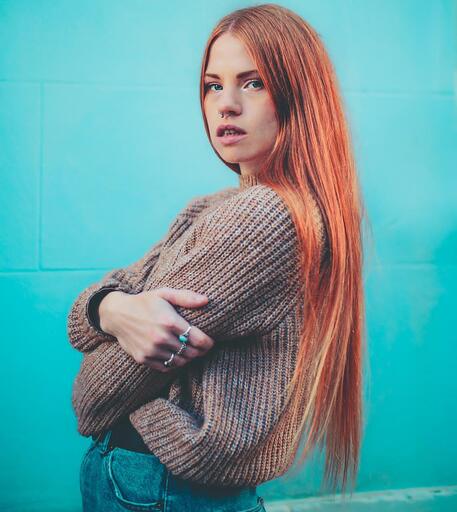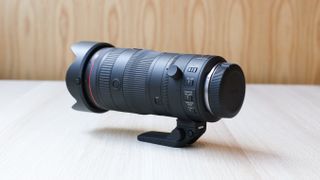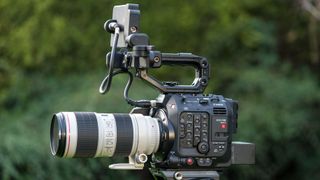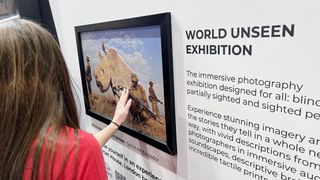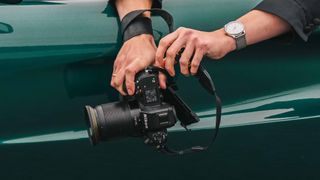
The Quick List ↩
1. Best 8K Nikon – Nikon Z9
2. Best 8K Sony – Sony A1
3. Best 8K Fujifilm – Fujifilm X-H2
4. Best 8K Canon – Canon EOS R5
5. Best 8K for travel – Sony A7R V
6. Best 8K 360 – QooCam 8K 360
7. Best 6K boxcam – Panasonic BS1H
8. Best 6K Canon – Canon EOS R3
9. Best 6K Super 35 – Blackmagic PCC 6K Pro
10. Best 6K Panasonic – Panasonic S5 IIX
11. Best 12K – Blackmagic Ursa Mini Pro 12K
How to choose
How we test
FAQs
The best 8K and 6K cameras represent the next generation of video content production. Able to capture crystal-clear video in ultra-high resolutions, these are the cameras for serious filmmakers and video professionals who need all the advantages these modes bring. We've reviewed all the cameras on this list, and only models that have seriously impressed our team have made it onto the list.
Most of the options you'll find on this guide are hybrid mirrorless cameras, designed to excel at both video and photography. Of course, you'll also find some of the best cinema cameras, as well as a 360-degree camera option. We've kept price in mind when making our picks, so this isn't simply a list of the top-of-the-line professional models. 8K and 6K video are more within reach of the average consumer than they ever have been – as this list demonstrates.
High-resolution video capture is a tricky beast, bringing with it issues like overheating, processing power requirements, and huge file sizes that need plenty of storage space. You may find the 6K options on this list more practical for your workflow than the 8K cameras – though we could hardly let this list go by without at least mentioning Blackmagic's 12K magnum opus, the Blackmagic URSA Mini Pro 12K. You can browse the quick list below for a rapid-fire overview of our picks, or read on to find out in full detail which cameras we've picked and why.
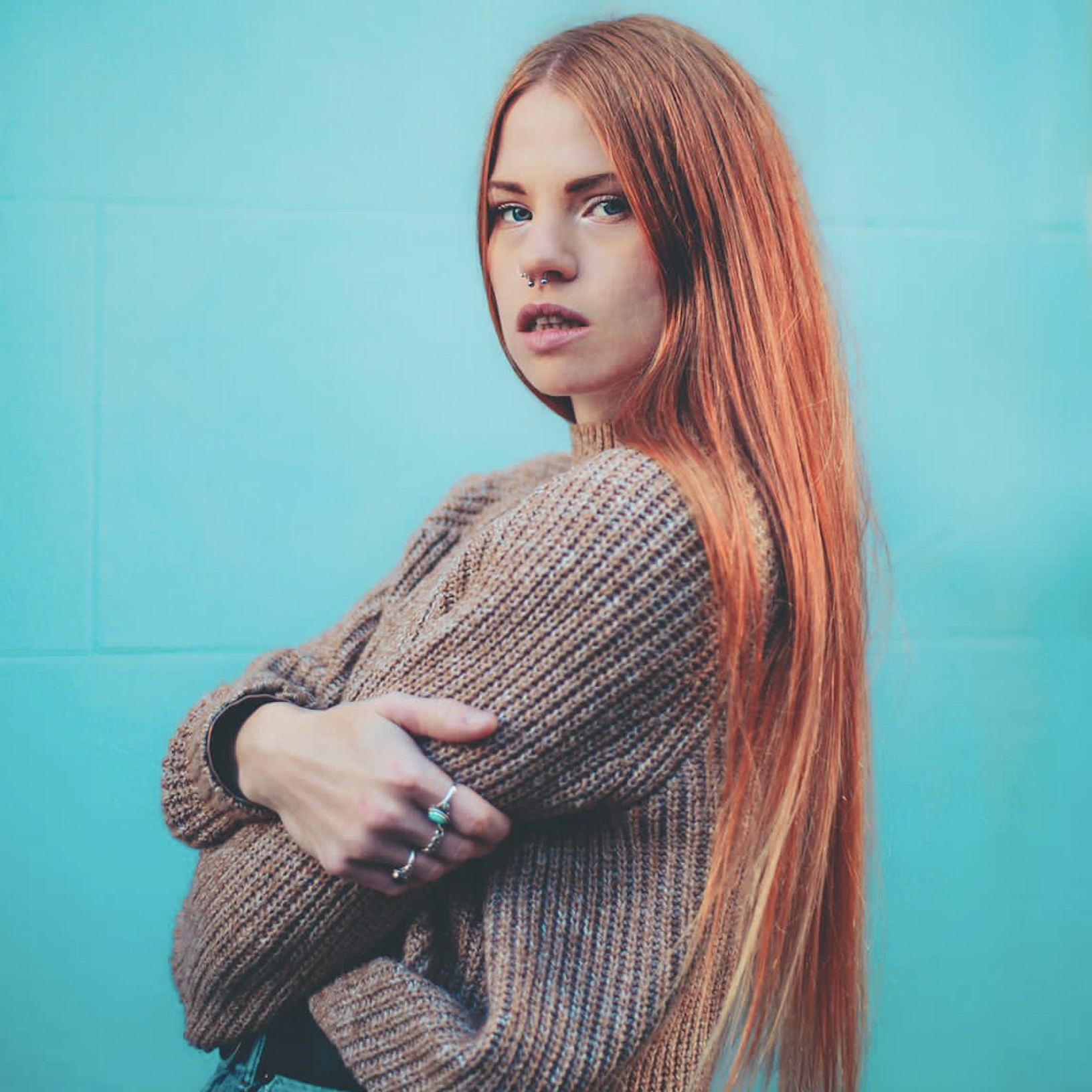
Hannah Rooke is one of DCW's staff writers. Having previously worked at UK-based retailer Wex Photo Video, she lives and breathes camera technology. Writing news, features and reviews for the site, she's always bang up-to-date on the latest releases, and specializes in helping photographers and videographers find the right gear for them. Here, she's brought her expert's eye to the best 8K and 6K cameras.
The quick list
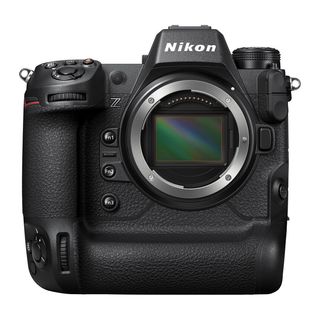
The Nikon Z9 is late to the pro mirrorless party – but with 120fps bursts and 2½ hours of 8K video, it may not matter.
Read more
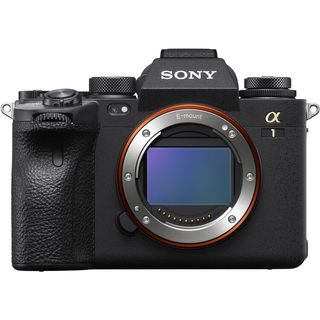
The Sony A1 is a flagship mirrorless camera with staggering specs matched to a pretty staggering price point. We check it out.
Read more
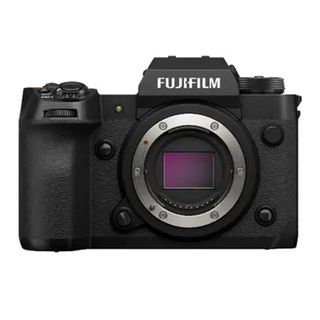
Best 8K Fujifilm
The Fujifilm X-H2 is quite simply astonishing for the price. It may well be Fujifilm's most expensive camera yet but there is good reason for it.
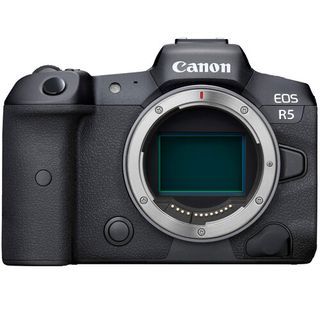
Best 8K Canon
The Canon EOS R5 is a sublime piece of camera engineering, and produces utterly pristine 8K footage. Overheating issues aside, its autofocus system is one of the finest on the market.
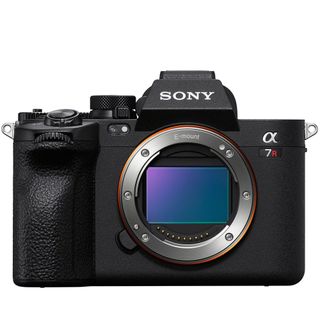
Best portable 8K camera
The mirrorless Sony A7R V may be a physically light and slim camera, but in terms of resolution and performance, it's a real heavyweight.
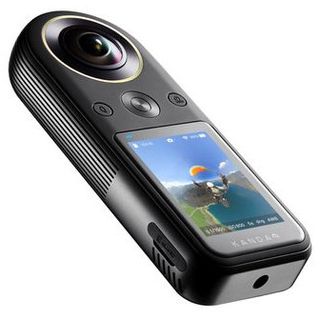
Best 8K 360 camera
It may be costly, but the Kandao QooCam 8K 360 is in a class of its own when it comes to high-resolution 360º content. For capturing absolutely everything around you, it's the best bet.
Load the next products ↴
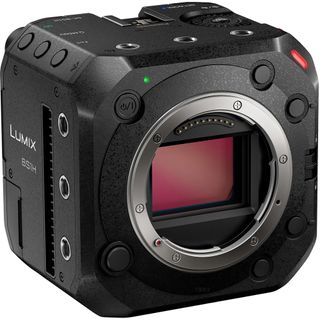
Best 8K boxcam
The Panasonic Lumix BS1H is squarely pitched at serious filmmakers. With cutting-edge specs in a small form factor, it can be used solo with ease.
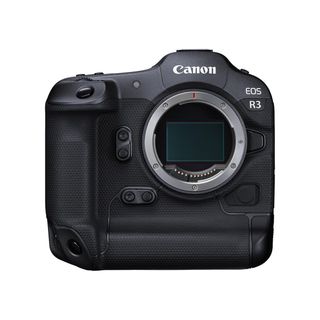
Best 6K Canon
It may not reach the 8K heights of the Nikon Z9 or Sony A1, but the Canon EOS R3 is a 6K beast that benefits from futuristic features like Eye Control focus – which really works!
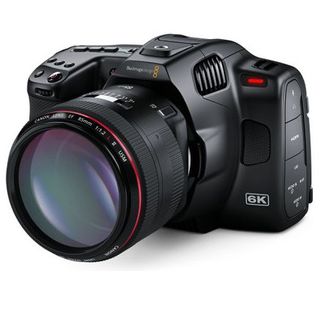
Best 6K Super 35
While 'pocket' is a bit of a misnomer in terms of its physical size, the Blackmagic Pocket Cinema Camera 6K Pro delivers a spectacular pro filmmaking spec, at a wallet-friendly price.

Best 6K Panasonic
With phase-detection autofocus and a gallery of cine-optimised features, the Lumix S5 IIX is the hybrid camera of choice for those who shoot a lot of video.
Read more below
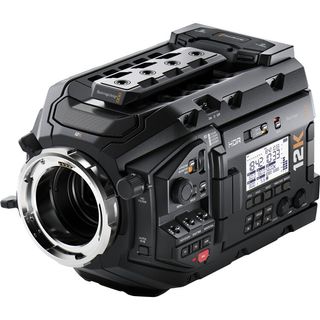
Best 12K camera
If nothing but the best will do, why not opt for the only camera on the market that shoots 12K! Built like a tank, the Blackmagic Ursa Mini Pro 12K is made for professional use.
The best 8K and 6K cameras in 2024
Why you can trust Digital Camera World
Best 8K Nikon camera
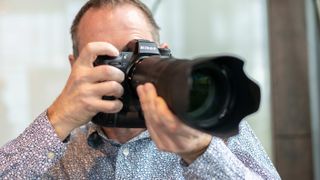
Nikon might've been late to the game in launching its professional, top-spec mirrorless but the Nikon Z9 was definitely worth the wait. It's an absolute beast of a camera when it comes to video, capable of recording in 8K 30p 10-bit Apple ProRes 4:2:2 HQ or 8K 60p 12-bit ProRes RAW HQ and has an enormous record limit of 2 hours.
Nikon removed the mechanical shutter completely which means the Z9 is capable of 120fps continuous shooting and has a max shutter speed of 1/32,000 which makes it perfect for sport and bird photography. The Z9 is powered by Deep Learning AF which makes the camera capable of nine kinds of recognition: human eyes, faces, heads and upper bodied; animal eyes, heads, and bodies; and cars, planes, trains, and motorbikes.
It has the same 493 AF points as the Nikon Z7 II, which seems impressive until you find out that the Canon EOS R3 has a whopping 4,779 AF points. The Z9 comes in quite a bit cheaper than both the Sony A1 and the Canon EOS R3 and it's packed with advanced features.
Read our full Nikon Z9 review for more details
Best 8K Sony camera
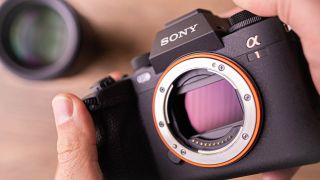
If you have an obscene amount of money to spend on a camera, you can't really beat the Sony A1. There is nothing it can't shoot may it be sports, fine details, portraits, landscapes, or video. Thanks to its insane 30fps continuous shooting, its 50.1-megapixel resolution, 8K recording, and its fully weather-sealed body, it's an absolute powerhouse of a camera. Perhaps the only downside is the fact it doesn't have a fully articulated screen.
While the Sony A1 is probably one of the fastest and most powerful cameras you can buy, it comes with a pretty weighty price tag. It costs almost twice the amount of the Sony A9 II and it's even more expensive than Fujifilm's phenomenal GFX 100S. It does have a tendency to top out at 15-20fps which while is still pretty fast, it's not exactly what the spec sheet says. Also, it's worth noting that you need to update the firmware to 1.10 in order for its in-body stabilization to work as intended. Despite those two little niggles, it's an absolute beast of a camera and a joy to shoot with.
Read our full Sony A1 review for more details
Best 8K Fujifilm camera
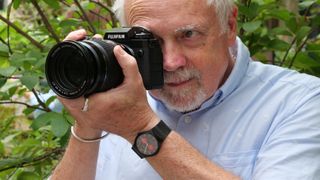
The Fujifilm X-H2 is quite simply astonishing for the price. It may well be Fujifilm's most expensive camera yet but there is good reason for it and you'd be hard-pushed to find another 8K camera at this price. Whether you're using it for photography or videography, the high-resolution sensor, in-body stabilization and lightning-fast AF make for an incredibly smooth shooting experience.
One of the disadvantages to shooting 8K is overheating but the X-H2 comes with cooling vents that claim a recording time of 160 minutes at 25° without any cooling or 240 minutes with the cooling fan (purchased separately). It might not be able to capture 5K 120P like the Fujifilm X-H2S but it can record 8K 30P and 6.2K 30P. This incredibly versatile camera would be well suited to a content creator who needs to shoot high-quality videos and photos but doesn't need a full-frame sensor.
Read our full Fujifilm X-H2 review for more details or Fujifilm X-H2 vs Fujifilm X-H2s
Best 8K Canon camera
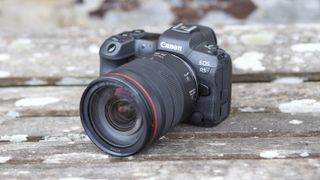
As a stills camera, the Canon EOS R5 is simply Canon's finest product ever. It’s the perfect amalgamation of the EOS R’s form, the EOS 5D’s function, and the professional-grade autofocus of the EOS-1D X. If you're a stills or hybrid shooter who flits between photography and videography, it's one of the best cameras you will ever have the pleasure of using.
It has attracted some attention for the wrong reasons, notably overheating (or the threat of it) when recording 8K video, but this shouldn't detract from this camera's extraordinary capabilities, and a subsequent firmware update has extended its 8K recording times. It's not perfect at everything, but given its resolution, its frame rate, and its video capabilities combined, this is genuinely a landmark camera. What's more – and this might sound a little strange – it's taken the arrival of the much more expensive Sony A1 to realize just how good the Canon EOS R5 actually is.
Read our full Canon EOS R5 review for more details
Best 8K camera for travelling light
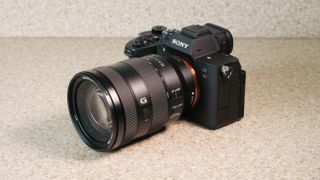
Technically overwhelming, physically underwhelming – that’s how the A7R V feels. The camera body feels too small – or not tall enough in the body – for the big pro lenses you’ll be using with it, and the controls follow a generic layout rather than being adapted to this camera’s strengths. You can customize the buttons endlessly to suit the way you work, but that takes time and also a good memory for which button you’ve customized to do what.
Technically, the A7R V is stunning. With 61 megapixels paired with new AI subject recognition AF is remarkable, both for its rapid identification and acquisition and its very sticky ‘tracking’. The image quality is every bit as good as that of the A7R IV before it (Sony says it’s better), and the bigger buffer makes the A7R V much more effective for prolonged burst shooting.
Read our full Sony A7R V review for more details
Best 8K 360 camera
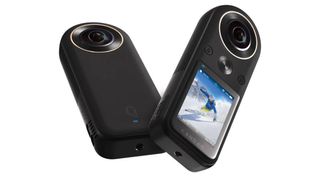
The QooCam 8K is the best 360 camera right now for image quality. A massive (by 360 standards) 1/1.7-inch CMOS sensor, 10-bit color, and, of course, that 8K resolution make sure of that. When it comes to the quality of its photos and videos, the QooCam 8K is peerless in the 360º market. Photos have plenty of colors and contrast like nothing we’ve seen before from a camera like this. The ability to spit out a great-looking photo from a 360º video is welcome, while the detail, sharpness, and smoothness of video – whether in 360º or cut down to widescreen – itself makes the QooCam 8K a giant leap forward for creative filmmakers. It does have an audible fan, however, the battery life isn't great and it's not waterproof without a housing. It was also pretty expensive.
Read our full QooCam 8K review for more details
Best 6K box camera
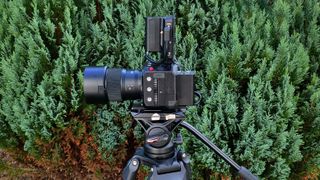
For serious video shooters, the Panasonic Lumix BSH1 boxcam can make a lot of sense as it can be rigged up for a multitude of different uses. It has a 24.2-megapixel full-frame sensor with Dual Native ISO technology, 14+ stops of dynamic range, and an OLPH (Optical Low Pass Filter) which helps to suppress moire and false colors and make it excellent in low light. It's capable of recording 6K 24p or 4K 60p 10 bit when using an image area equivalent to Super 35mm. If you're using the entire 35mm sensor area, it can shoot 4K 30p 10-bit 4.2.2 in H.264.
With live streaming growing increasingly popular, the BS1H is capable of transmitting high-quality footage to social streaming platforms over a wired LAN collection. It can stream 4K 60p video in H.265 which means the bit rate is halved and the image quality is kept the same. The lack of a screen may be off-putting but its modular system means you can easily attach an external recorder such as the Atmos Ninja V which will also make it capable of outputting 12-bit raw video.
Read our full Panasonic Lumix BSH1 review for more details
Best 6K Canon camera
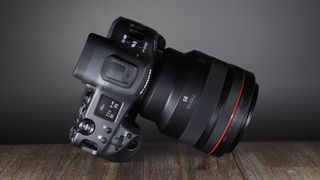
The EOS R3 is Canon's mirrorless rival to the Nikon Z9 and Sony A1, and it immediately differentiates itself from those cameras in a number of ways. For one, its video resolution tops out at 6K rather than 8K. While that'll be a non-starter for those who came to this guide specifically looking for an 8K camera, the 6K RAW video produced by the EOS R3 is crystal clear and utterly sublime. Better yet, it benefits from all the same autofocus advancements that the stills modes do – so not only do you get Deep Learning AF, but you get the space-age Eye Control function that literally follows the movements of your eye in the viewfinder.
This is a camera that has been built from the ground up with professionals in mind (naturally it is priced as such), and using it truly does feel like you're holding the future in your hands. We have a few reservations – the decision to split the two card slots between CFexpress and standard SD, for instance. While this is handy in the sense that pretty much any photo/video shooter will have an SD or two lying around, the slower format isn't really up to the data-crunching challenges of the EOS R3's more demanding shooting modes.
See our full Canon EOS R3 review
Best 6K Super 35 camera
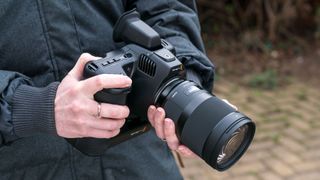
The new Blackmagic Pocket Cinema Camera 6K G2 is cheaper still, but we think it's worth paying the extra (and it's not much) for the Blackmagic Pocket Cinema Camera 6K Pro. It's an evolution of the original 6K model which adds features missing from the first, including in-built ND filters.
First of all, though, you have to get used to the handling from the odd size and large shape of the Super35mm Blackmagic Pocket Cinema Camera 6K Pro – which is certainly far from being pocket size. And the lack of continuous autofocus, image stabilization, or any auto-exposure can be an issue for some. It’s definitely not a run-and-gun camera. But if you use it as a tool for considered, cinematic shooting then it’s a bit of a steal as it produces rich, detailed files in raw or ProRes from its dual native ISO sensor.
Read our full Blackmagic Pocket Cinema Camera 6K Pro review for more details
Best 6K Panasonic camera
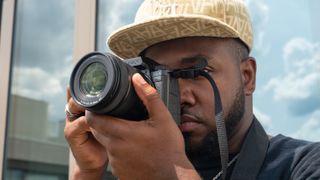
The Lumix S5 IIX is a video-focused variant of Panasonic's successful Lumix S5 II, the camera that finally brought phase-detection autofocus to the Lumix brand. That camera was also already pretty much a beast as far as video spec was concerned, so what does the S5 IIX actually do differently? Well, the headline video resolutions are the same – both can shoot 6K 'open-gate' at up to 30p, as well as a range of other resolutions and frame rates. However, the Lumix S5 IIX offers substantially higher bitrates (up to 800Mbps in C4K) internally. Plus, if you hook it up to an external SSD, it can capture 5.8K Apple ProRes, as well as Apple Pro Res RAW when hooked up to an Atomos recorder.
Quite technical-sounding differences, but for serious filmmakers, they make a huge difference. Our reviewer was hugely impressed with the Lumix S5 IIX, awarding it the full five-star score as a top-tier camera that slots easily into professional workflows while still delivering premium video quality. The 6K footage just consistently delivers, and at such a competitive price, the Lumix S5 IIX should warrant consideration from any serious video shooter.
See our full Panasonic Lumix S5IIX review
Best 12K camera
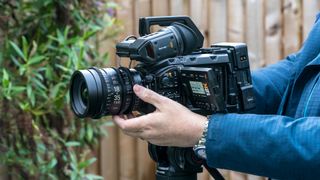
If you really must have the bragging rights that come with owning the highest-resolution video camera on the market, then the Blackmagic Ursa Mini Pro 12K is it. With a 79.6-megapixel CMOS sensor, it shoots 12K Blackmagic Raw files which give stunning quality with 14 stops of dynamic range and very filmic colors. Reduce it to a more reasonable 8K and 4K, and not only is the quality incredible, but you can shoot at fast frame rates that no other cameras can.
But a camera is more than just its headline resolution and the Ursa Mini Pro 12K is based on the original Ursa Mini Pro launched almost four years ago and is starting to show its age. For example, it has a Super35mm sensor, no IBIS, no codecs other than Raw, no continuous autofocus at all, and certainly no phase-detection AF. It’s really a camera for experienced cinematographers shooting narrative dramas such as feature films and VFX specialists rather than all-rounders.
Read our full Blackmagic Ursa Mini Pro 12K review for more details
How to choose the best 8K or 6K camera
While a lot of attention is paid to headline resolution when it comes to cameras for video, when choosing the right model for you, it's worth taking a holistic view of the specs. For instance, high-resolution video modes often come with a number of caveats – a camera may be able to shoot 8K 60p, but how long can it sustain that resolution before overheating? Does the video mode use the full width of the sensor or does it incur a crop – this can make it harder to shoot at wider angles. And on that note, larger sensor sizes are also a plus as they provide greater dynamic range and better capacity for shooting with a shallow depth of field. However, they come at a cost.
Almost all of the cameras on this list have interchangeable-lens mounts, so it's also worth looking at the lens selection for each one. Size and weight may also be an issue, particularly if you're planning on travelling with your shooting setup.
How we test 8K and 6K cameras
We test 8K and 6K cameras both in real-world shooting scenarios and in carefully controlled lab conditions. Our lab tests measure resolution, dynamic range, and signal-to-noise ratio. Resolution is measured using ISO resolution charts, dynamic range is measured using DxO Analyzer test equipment and DxO Analyzer is also used for noise analysis across the camera's ISO range.
As well as lab testing, our reviewers also assess every camera's real-world usability and how a model performs out in the field. This includes looking at how well laid-out its controls are, how easy various functions are to find and use, and how it responds to different shooting challenges. We look at a camera's wider place in the market as well, weighing it up against its competition to see whether it's worth the price its manufacturers are asking. We make our judgements based on years of expertise in the fields of filmmaking and photography.
Find out how we test and review on Digital Camera World.
FAQs
How much more resolution is there in 8K compared to 4K
Resolution is measured in terms of the total number of pixels in an image. A 4K image roughly measures 4000 pixels across - and an 8K image is approximately 8000 pixels across. So in terms of area, 8k is four times bigger - with four times as many pixels (and four times the resolution).
Typical resolutions for each format are given in the table below for video shot in a 16:9 aspect ratio:
| Format | Pixel dimensions | Total pixels |
|---|---|---|
| 12K | 12288 x 6912 | 84MP |
| 8K | 7680 x 4320 | 33MP |
| 6K | 6144 x 3456 | 18MP |
| 4K (UHD) | 3840 x 2160 | 8MP |
| 2K (Full HD) | 1920 x 1080 | 2MP |
Where can I watch 8K content?
TVs equipped with 8K have been rolling out of factories since 2018 – however, the film and television industries have been slow to actually produce content for them. YouTube and Vimeo both support 8K streaming, so you can head to either platform to check out various examples of user-shot 8K content. There have also been some movie trailers released in 8K, including for Barbie, Wonka and Dune: Part Two.
Is 8K worth it?
If we're not seeing much content released in 8K yet, you're justified in wondering whether the upgrade is worth it. While this is a question that only you can answer as a filmmaker and video shooter, there are a number of advantages to having 8K at your disposal beyond simply being able to put out content at this high resolution.
Just as when Full HD was the general standard and 4K was the luxury high-res option, shooting in 8K expands your options for producing content in 4K. You can crop significantly into 8K footage and still get the resolution required for 4K content, meaning you have a lot more flexibility when it comes to framing and editing – you can even introduce a horizontal pan into a static shot.
Read more:
Best cinema cameras
Best 4K cameras for video
Best vlogging cameras
Best 360 cameras
